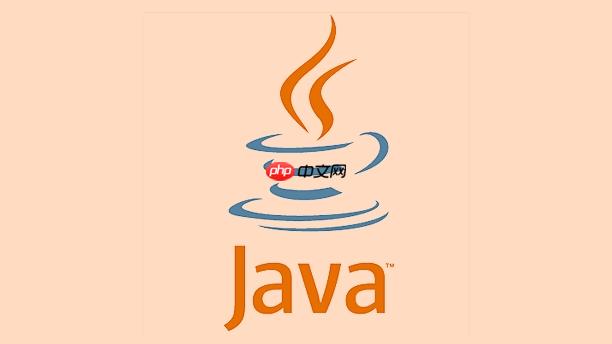首先添加HttpClient依赖,创建CloseableHttpClient实例,再根据请求类型构建HttpGet或HttpPost,设置请求头与实体,通过execute方法发送请求并处理响应,最后关闭客户端释放资源。

HttpClient在Java中用于发送HTTP请求,它提供了比URLConnection更强大和灵活的功能。简单来说,HttpClient可以让你模拟浏览器行为,发送各种类型的HTTP请求,并处理服务器返回的响应。
解决方案
使用HttpClient发送网络请求主要涉及以下几个步骤:
添加依赖:首先,需要在项目中引入HttpClient的依赖。如果你使用Maven,可以在
pom.xml
立即学习“Java免费学习笔记(深入)”;
<dependency>
<groupId>org.apache.httpcomponents</groupId>
<artifactId>httpclient</artifactId>
<version>4.5.13</version> <!-- 使用最新版本 -->
</dependency>如果是Gradle,则在
build.gradle
implementation 'org.apache.httpcomponents:httpclient:4.5.13' // 使用最新版本
创建HttpClient实例:使用
HttpClientBuilder
import org.apache.http.impl.client.CloseableHttpClient; import org.apache.http.impl.client.HttpClientBuilder; CloseableHttpClient httpClient = HttpClientBuilder.create().build();
创建HttpRequest对象:根据需要选择不同的请求类型,例如GET、POST等。
GET请求:
import org.apache.http.client.methods.HttpGet;
HttpGet httpGet = new HttpGet("http://example.com/api/data");POST请求:
import org.apache.http.client.methods.HttpPost;
import org.apache.http.entity.StringEntity;
HttpPost httpPost = new HttpPost("http://example.com/api/submit");
StringEntity entity = new StringEntity("{\"key\":\"value\"}"); // JSON 数据
httpPost.setEntity(entity);
httpPost.setHeader("Content-Type", "application/json");执行请求并处理响应:使用HttpClient实例执行HttpRequest,并处理服务器返回的HttpResponse。
import org.apache.http.HttpResponse;
import org.apache.http.util.EntityUtils;
HttpResponse response = httpClient.execute(httpRequest); // httpRequest可以是HttpGet或HttpPost
try {
int statusCode = response.getStatusLine().getStatusCode();
String responseBody = EntityUtils.toString(response.getEntity(), "UTF-8");
System.out.println("Status Code: " + statusCode);
System.out.println("Response Body: " + responseBody);
} finally {
EntityUtils.consume(response.getEntity()); // 确保释放资源
}关闭HttpClient:在使用完毕后,关闭HttpClient以释放资源。
httpClient.close();
HttpClient如何处理HTTPS请求?
HttpClient默认支持HTTPS请求。当请求的URL以
https://
你可以通过
SSLContextBuilder
import org.apache.http.ssl.SSLContextBuilder;
import javax.net.ssl.SSLContext;
import org.apache.http.conn.ssl.SSLConnectionSocketFactory;
import org.apache.http.impl.client.HttpClients;
SSLContext sslContext = SSLContextBuilder.create()
.loadTrustMaterial(null, (certificate, authType) -> true) // 信任所有证书 (不安全,生产环境避免)
.build();
SSLConnectionSocketFactory sslSocketFactory = new SSLConnectionSocketFactory(sslContext);
CloseableHttpClient httpClient = HttpClients.custom()
.setSSLSocketFactory(sslSocketFactory)
.build();如何设置HttpClient的超时时间?
设置超时时间对于避免程序长时间阻塞非常重要。可以通过
RequestConfig
import org.apache.http.client.config.RequestConfig;
RequestConfig requestConfig = RequestConfig.custom()
.setConnectTimeout(5000) // 连接超时时间:5秒
.setConnectionRequestTimeout(5000) // 从连接池获取连接的超时时间:5秒
.setSocketTimeout(10000) // Socket超时时间:10秒
.build();
HttpGet httpGet = new HttpGet("http://example.com/api/data");
httpGet.setConfig(requestConfig);
CloseableHttpClient httpClient = HttpClientBuilder.create().setDefaultRequestConfig(requestConfig).build();HttpClient如何处理Cookie?
HttpClient可以自动处理Cookie。服务器通过
Set-Cookie
Cookie
import org.apache.http.client.CookieStore;
import org.apache.http.impl.client.BasicCookieStore;
import org.apache.http.cookie.Cookie;
CookieStore cookieStore = new BasicCookieStore();
CloseableHttpClient httpClient = HttpClientBuilder.create().setDefaultCookieStore(cookieStore).build();
HttpGet httpGet = new HttpGet("http://example.com/login");
HttpResponse response = httpClient.execute(httpGet);
// 检查Cookie
List<Cookie> cookies = cookieStore.getCookies();
for (Cookie cookie : cookies) {
System.out.println("Cookie Name: " + cookie.getName());
System.out.println("Cookie Value: " + cookie.getValue());
}
// 后续请求会自动带上Cookie
HttpGet httpGet2 = new HttpGet("http://example.com/profile");
HttpResponse response2 = httpClient.execute(httpGet2);HttpClient如何处理重定向?
HttpClient默认会自动处理重定向。如果需要禁用自动重定向,可以设置
RedirectStrategy
import org.apache.http.impl.client.LaxRedirectStrategy;
CloseableHttpClient httpClient = HttpClientBuilder.create()
.setRedirectStrategy(new LaxRedirectStrategy()) // 使用LaxRedirectStrategy,支持POST重定向
.build();如何使用HttpClient发送文件?
发送文件需要使用
MultipartEntityBuilder
import org.apache.http.entity.mime.MultipartEntityBuilder;
import org.apache.http.entity.mime.content.FileBody;
import java.io.File;
HttpPost httpPost = new HttpPost("http://example.com/upload");
File file = new File("path/to/your/file.txt");
FileBody fileBody = new FileBody(file);
MultipartEntityBuilder builder = MultipartEntityBuilder.create();
builder.addPart("file", fileBody);
httpPost.setEntity(builder.build());
HttpResponse response = httpClient.execute(httpPost);使用HttpClient发送网络请求是Java开发中常见的任务。掌握HttpClient的基本用法,能够让你更灵活地处理各种HTTP请求,并与服务器进行数据交互。记住,处理异常和资源释放是保证代码健壮性的关键。
以上就是java使用教程怎样使用HttpClient发送网络请求 java使用教程的网络操作方法的详细内容,更多请关注php中文网其它相关文章!

java怎么学习?java怎么入门?java在哪学?java怎么学才快?不用担心,这里为大家提供了java速学教程(入门到精通),有需要的小伙伴保存下载就能学习啦!

Copyright 2014-2025 https://www.php.cn/ All Rights Reserved | php.cn | 湘ICP备2023035733号